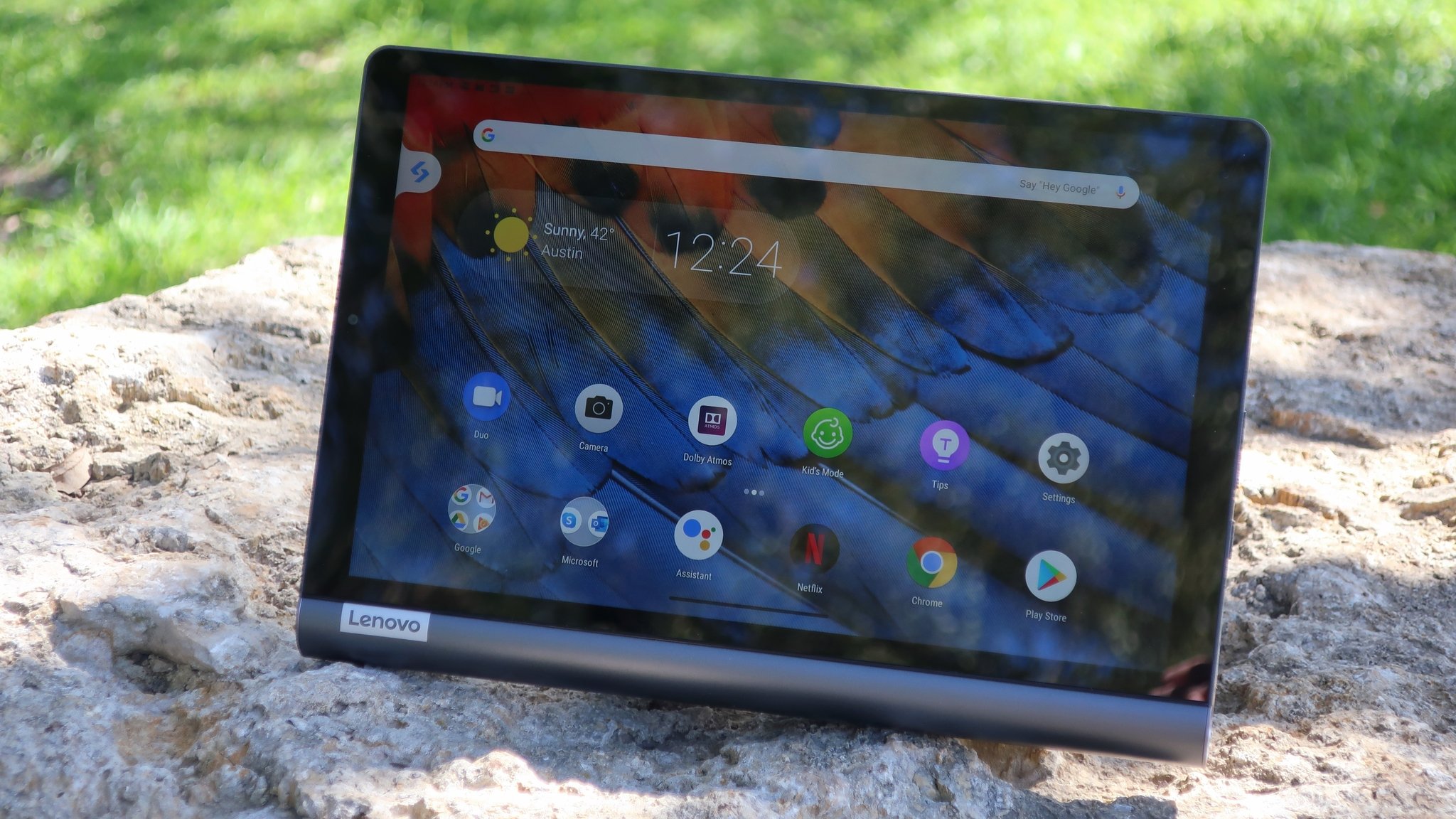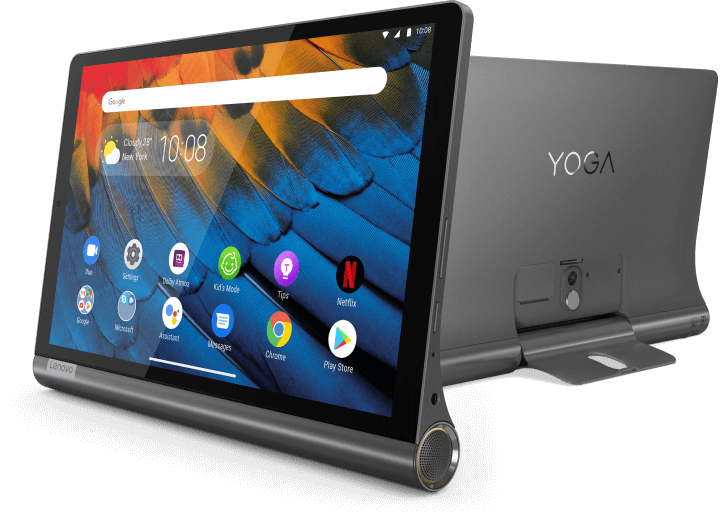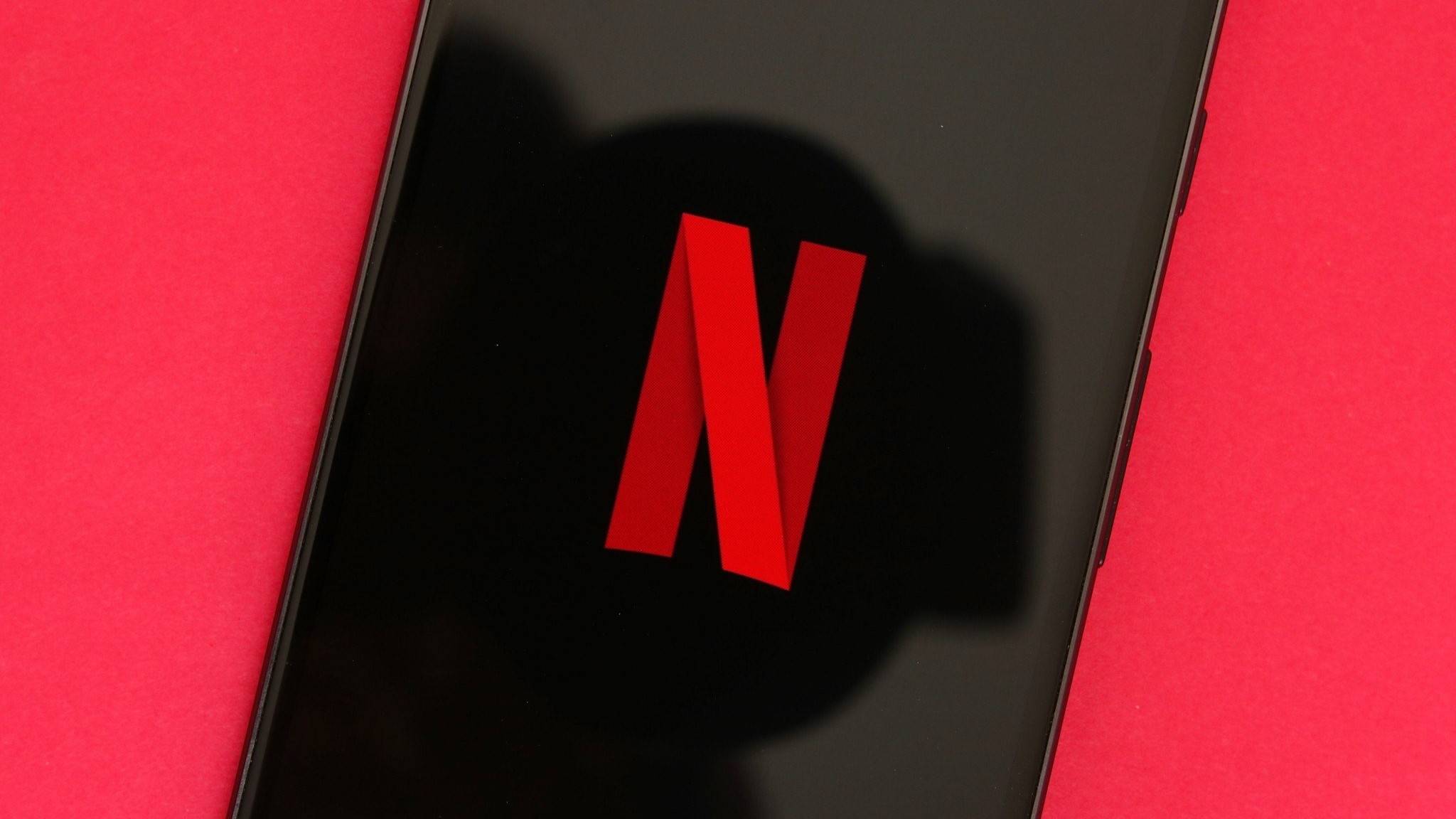Android Central Verdict
Bottom Line The Lenovo Yoga Smart Tab with Google Assistant is a really nice secondary device. If what you're looking for is an entertainment tablet with some extra functionality, this is a great choice. It won't replace a laptop, but it might replace another tablet and negate the need for a smart speaker.
Pros
- +
Well-built aluminum design
- +
Unique kickstand functionality
- +
Stereo JBL speakers
- +
Comfortable for one-handed use
Cons
- -
Ships with Android 9 Pie
- -
Typical Android tablet hangups
- -
Kickstand doesn't work in portrait mode
Why you can trust Android Central
I'll admit it, when I first saw this tablet, I was a little suspicious. I thought, "another Android tablet?" Aren't they all kind of meh, with lackluster specs, software that isn't optimized for the form factor, and uninspired design? Well, that may be true for many of the also-rans, but hoo boy was I pleasantly surprised by this latest from Lenovo.
You would think that there isn't that much room to be creative when designing a tablet, and that it's just a slightly bigger rectangular slab than our phones. But as Lenovo has shown in previous versions of this design, there is room for other ideas. The unusual, tubular edge and kickstand are not there for decoration — they actually have a useful purpose. And you know what else? As much as I love Chromebook convertibles, I think Android can actually be better in this form factor.
A look at the specs
| Specs | Lenovo Yoga Smart Tab with Google Assistant |
|---|---|
| Software | Android 9 Pie (with Google Ambient Mode) |
| Display | 10.1-inch FHD IPS1920x1200p |
| Chipset | Qualcomm Snapdragon 439 |
| RAM | 3GB or 4GB |
| Storage | 32GB or 64GB eMMC (expandable) |
| Camera | 5MP86-degree wide angle FFC | 8MP rear camera |
| Audio | 2 x 2W JBL Hi-Fi speakersDolby Atmos3 digital far-field microphones3.5mm audio/mic jack |
| Connectivity | Wi-Fi 802.11 a/b/g/n/acdual-band (2.4GHz & 5GHzBluetooth 4.2 |
| Ports | 1 USB-C 2.03.5mm audio jack |
| Battery | 7000mAh |
| Dimensions | 9.53 x 6.54 x .22 inches |
| Weight | 1.26 pounds |
As you can see, this tablet doesn't ship with the latest version of Android. It turns out, that's not due to neglect. You'd be hard-pressed to find any Android tablets that do have Android 10, and it's not even on the latest Samsung Galaxy Tab S6. Honestly, I don't think you'll miss any updates (most have to do with permissions that may not apply to tablet usage). You still have the option for gesture navigation (it's the default, actually), though some of Android 10's accessibility features such as Live Caption and Live Transcribe would be welcome and useful in a tablet form factor.
I'll get into this more below, but the hardware chops are pretty nice on this tablet. The display looks sharp, and the JBL stereo speakers with Dolby Atmos sound really good. The base model storage is a little low, but it is expandable thanks to a microSD card slot. I also appreciate that Lenovo included a headphone jack. Note that there is an LTE model available, but we didn't receive that version to test.
The battery is a decent capacity for the size and thickness of this tablet, and it was capable of getting through a days worth of use for me, particularly when the ambient display was turned off. And speaking of its size, the Yoga Smart Tab actually fits within the footprint of the latest entry-level iPads. It's not too unwieldy, and with its kickstand and tube it was just as easy, if not easier, on my hands than other tablets I've used. Now, let's talk about those other tablets.
How does it compare?
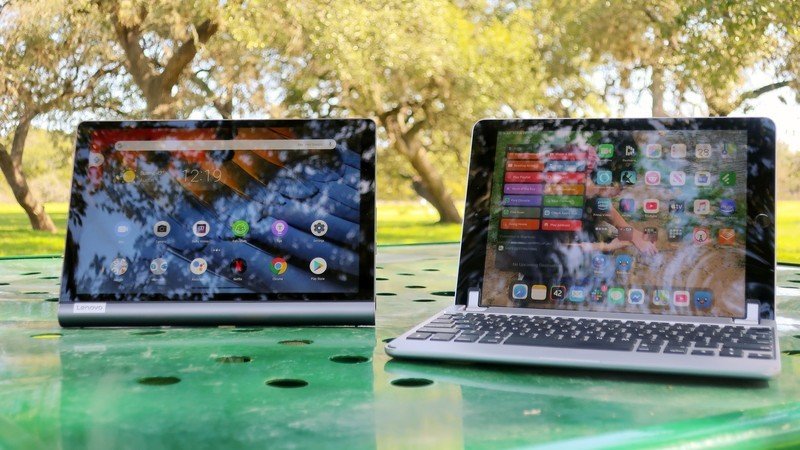
Aside from talking about how this device looks, feels, and performs, you're no doubt interested in how it stacks up to the competition. I mean, why wouldn't you be? You want to make sure you spend your hard-earned money on the right device. I'm not going to go point-by-point against every tablet on the market here, but I did have a few notes of comparison based on my personal tablet ownership and usage. For a look at some other competitors, check out our roundup of the best Android tablets available right now.
vs. iPad 10.2
From a price perspective, the Yoga Smart Tab device starts at $300. That puts it right up against Apple's latest iPad (the 10.2 "regular" one), which starts at $330. In some respects, it competes quite nicely.
Both devices are about the same size (10.1 vs. 10.2 inches), both have a sturdy aluminum construction, and both are great for content consumption. These two tablets can also be used as smart home controllers, with the Lenovo featuring Google Assistant Ambient Mode and the iPad able to serve as a HomeKit hub. The iPad does win out in terms of productivity, with its support for stylus input (Apple Pencil) and integrated keyboard support. That being said, I really like the functionality of the "tube" side of the Yoga Smart Tab for holding while reading, and the kickstand is great for propping it up hands-free. Similarly, I actually keep my iPad in its Brydge keyboard mostly for its functionality as a stand rather than as a keyboard.
vs. Fire HD 10
Amazon's Fire HD 10 tablet is another that you might consider against the Yoga Smart Tab. The screen sizes are very similar, and both are meant more as content consumption devices than as productivity devices. The Fire HD 10 ships with Show Mode, which is the Amazon/Alexa version of Google Assistant's Ambient Mode, and predates the latter by several years (even three or four-year-old Fire tablets have this functionality).
However, to get the most from Show Mode, you do need to purchase a case (not included) to prop up the tablet. Where the Fire HD 10 does win out is on price — it starts at just $150, and is often on sale for under a hundred dollars.
vs. Chromebooks
What about convertable and touchscreen Chromebooks? Those are definitely a competitor to any tablet, as many of them have a tablet mode, and all modern Chromebooks can run Android apps. Chromebook prices run the gamut, from under $100 to over $1,000, but you can certainly find some good options in this $200-$350 space such as the Lenovo C340 (another quality Lenovo product) and the Asus Chromebook Flip C214.
Ultimately, I think the comparison comes down to how you plan on using the device. If you're looking for a nice, well-made device to watch Netflix and catch up on Instgram, then get a tablet like the Yoga Smart Tab. If you need something more for productivity (and want a built-in keyboard), look at a Chromebook.
The Yoga is pretty darn flexible
As you've no doubt surmised by now, I am pretty high on this device, and there are several key areas that I think make it worthy of your consideration. I'll go over each in turn, below.
Design and build
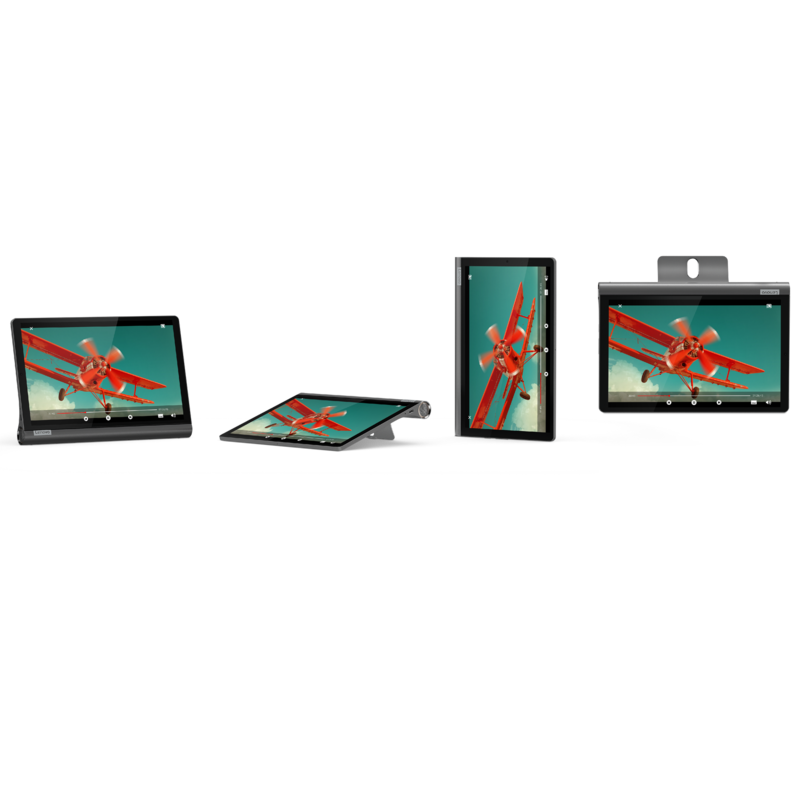
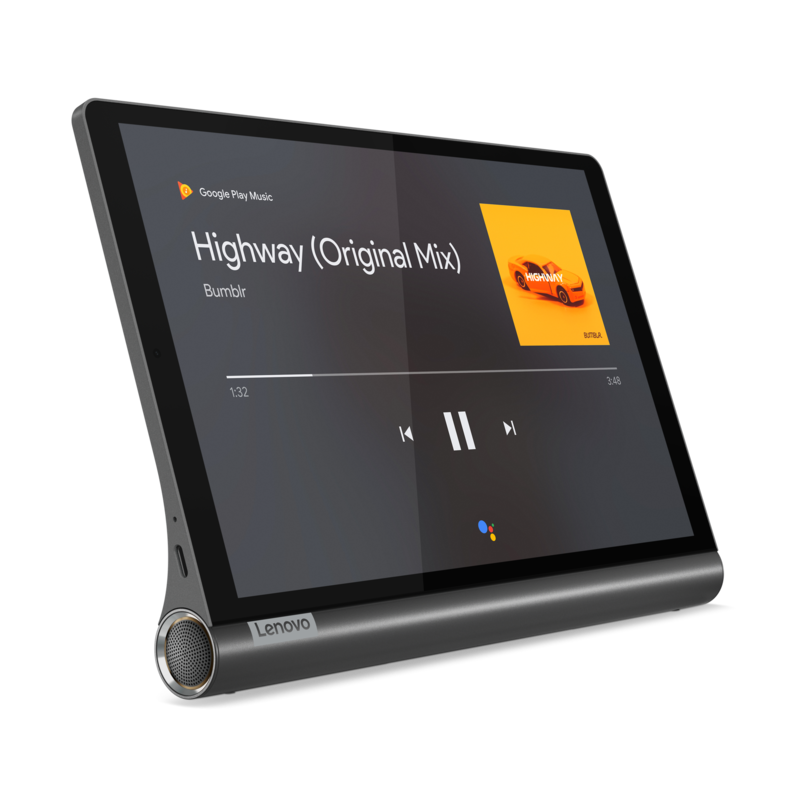
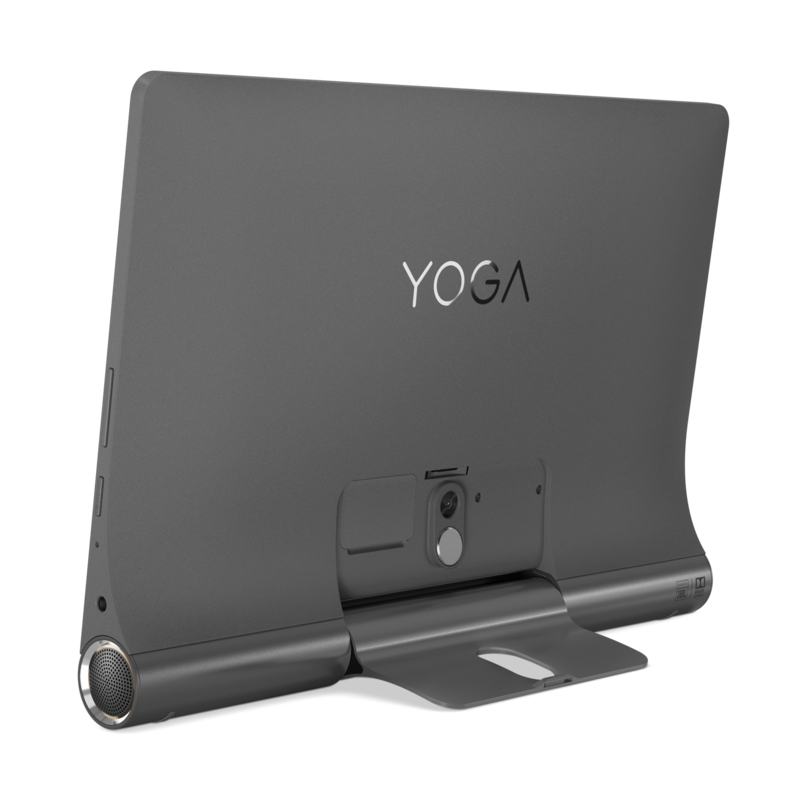
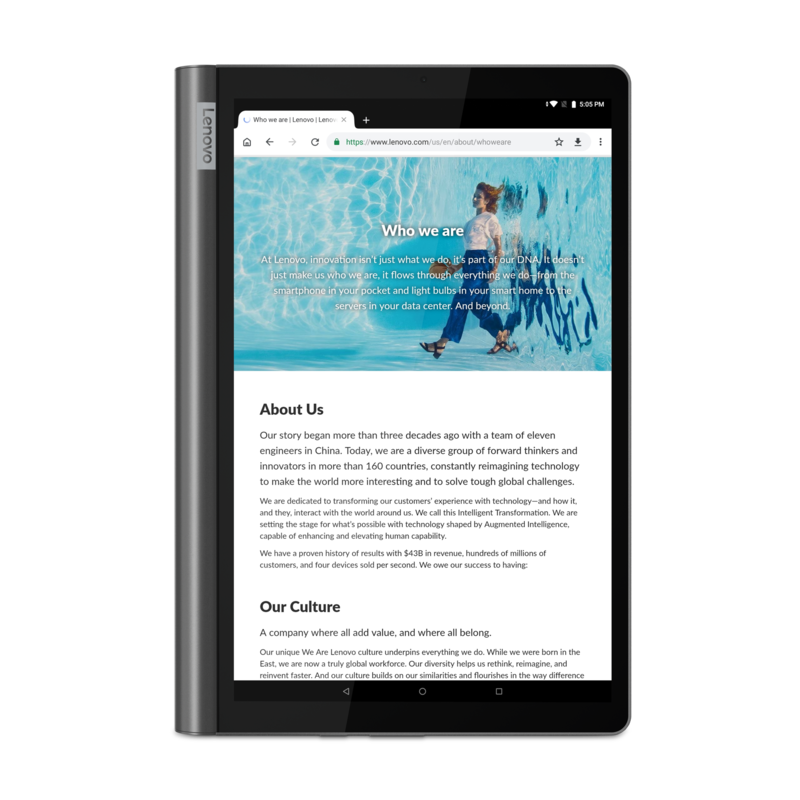
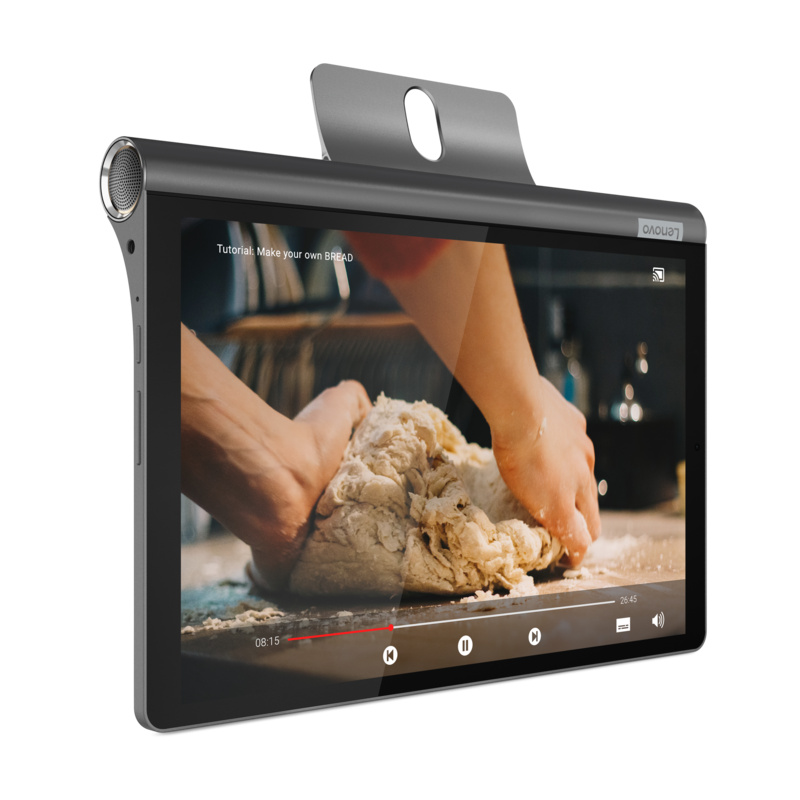
Generally speaking, I've always been pretty impressed with the build quality and design of Lenovo products, whether that be a laptop PC, Chromebook, or a smart display, and I certainly wasn't disappointed here. The Yoga Smart Tab is made of a combination of iron grey aluminum and soft-touch material around a 10.1-inch glass screen and an interesting, "tubular" edge that houses its speakers. It sounds complicated, and there are a lot of different components, but they're well put together with tight tolerances. This thing feels solid.
The Yoga Smart Tab does have a moving part, and it's kind of an important one. The "multimodal" kickstand allows you to use the tablet in four different orientations — as a stand in landscape mode, tilted in an almost horizontal manner, handheld in portrait orientation, and hanging on a hook or tab. I found the first three modes to be handy but didn't find myself using the hanging mode at all. I do see the utility in it, though, particularly in places like a kitchen or workshop where you might want it off the surface or countertop. It might be a gimmick, but it's a cool one, and I can see why my colleagues at Windows Central love the kickstands in their Microsoft Surface devices.
I can now understand why Microsoft Surface users love the kickstand on their devices.
The tubular edge housing the speakers makes a great grip for holding the device one-handed while reading an e-book or web article. It's how I imagine using the Huawei Mate XS or an Amazon Kindle Oasis is with their asymmetrical designs. The soft-touch material on the back contributes to this ergonomic feel, and because it's a similar color and is flush with the housing, it takes a second look even to notice it's a different material.
Android on a tablet
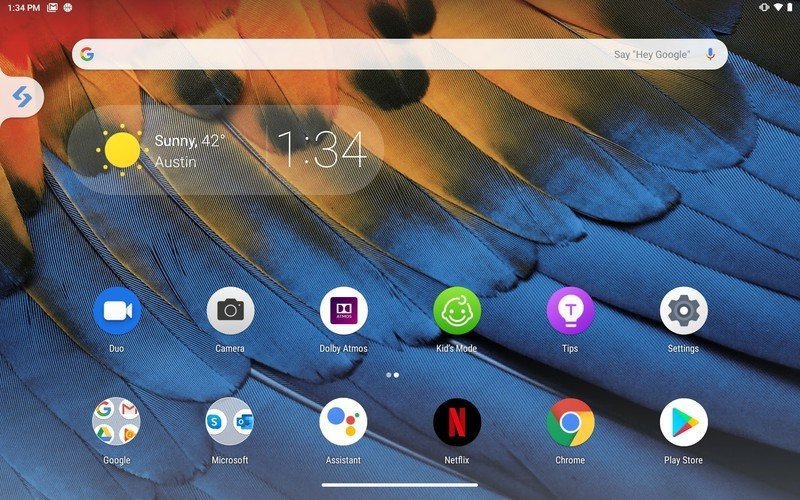
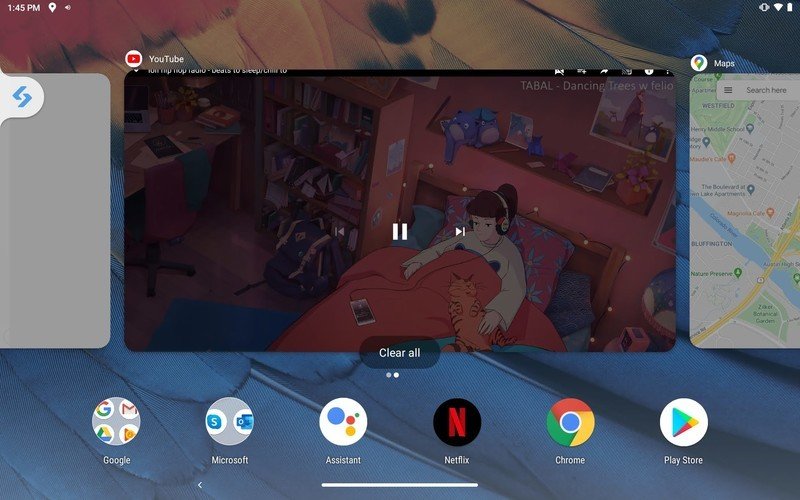
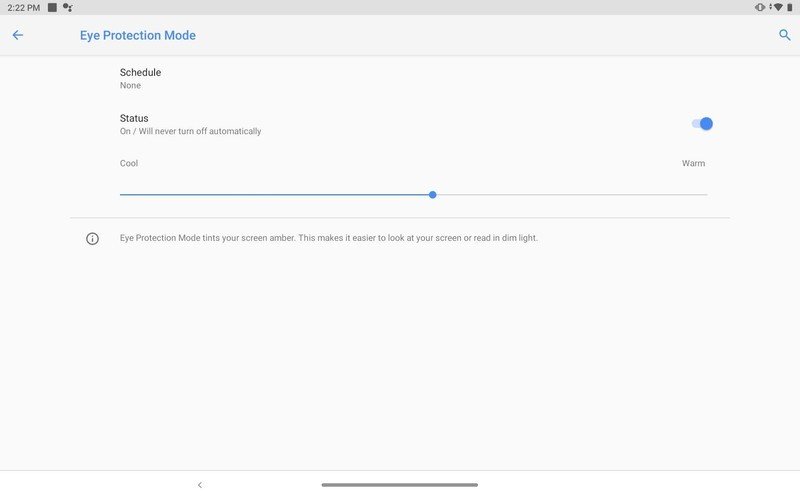
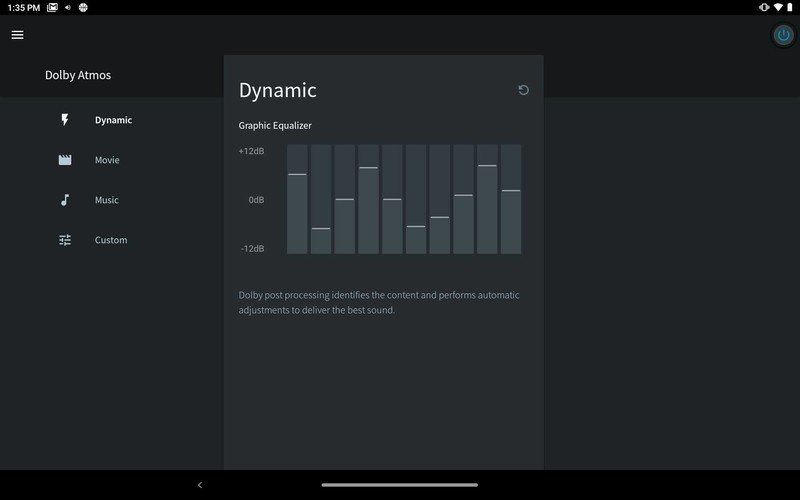
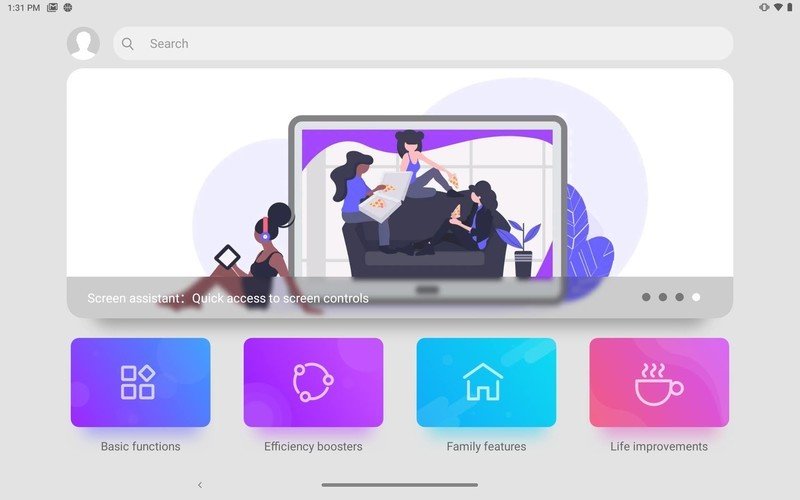
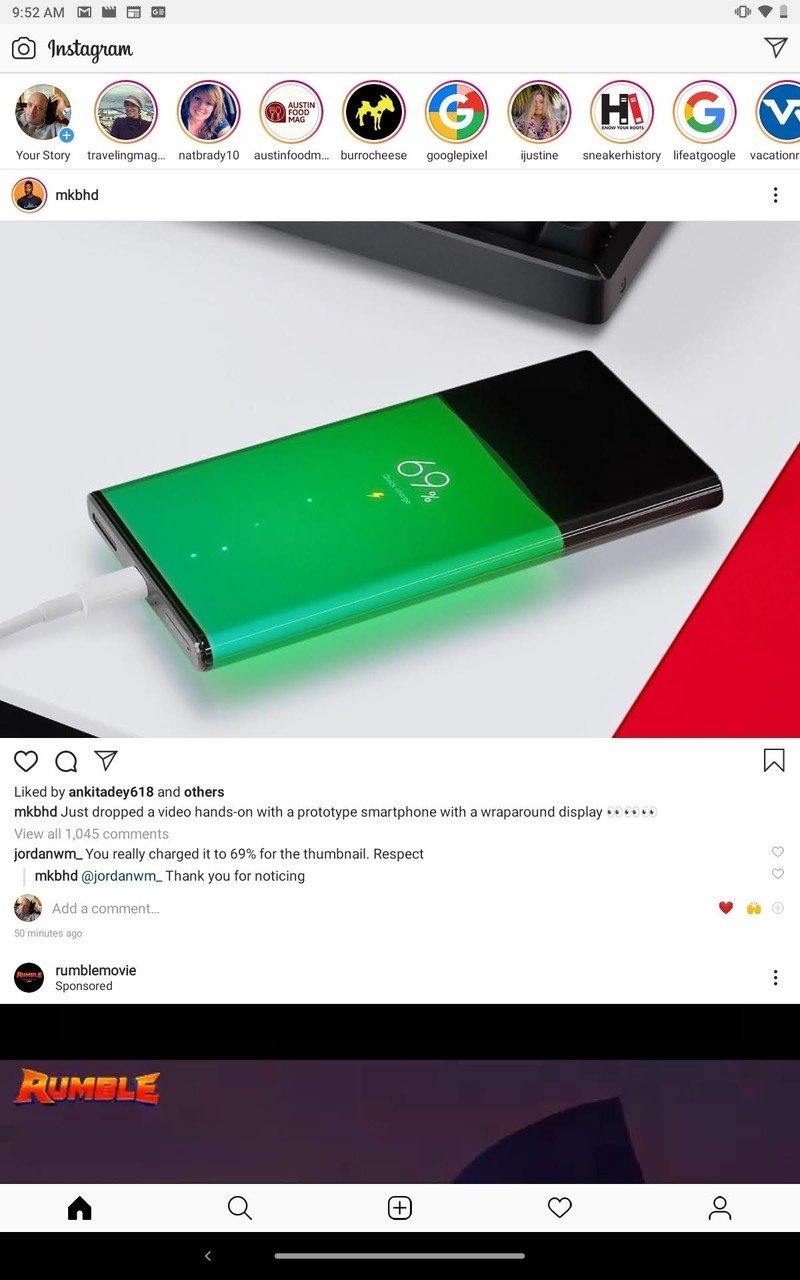
I didn't expect to love the experience of using Android on a tablet, but it turns out it's not as bad as I'd thought. Some of my most commonly used apps on my phone worked just fine here as well, and the gesture navigation worked well (at least in terms of multitasking). Particularly as a content consumption device, I don't think the Yoga Smart Tab loses any points by having Android serve as its OS.
You may be thinking, "why doesn't this device run Android things?" Good question, and I think the answer is that it is meant to be a tablet first, smart-home hub second. Its "smart hub" features are limited to the Ambient Mode and the fact that you can use Google Assistant hands-free to do things like turn on smart lights or look at your Nest Cam feed. But because this is a portable device with many use cases, using "regular" Android was the right call, in my opinion.
Ports
I didn't expect to include ports in a list of Pros for this review, but here we are. Not only does this have a USB-C port for charging, but it comes equipped with a 3.5mm audio jack that can be used for headphones or a microphone. It also has a microSD card slot for memory expansion (remember, the internal base storage is only 32GB or 64GB), and there is even an LTE model with SIM card support. So when compared against the Fire HD 10 and iPad 10.2 from earlier, the Lenovo Smart Tab has advantages over both.
Screen and speakers
It seems that 10-inches is a sweet spot for most tablets, be they iOS, Windows, Chrome, or Android, and this device certainly follows that trend. It has a 10.1-inch, full HD IPS panel at a resolution of 1920x1200, and to my eyes, it looks vibrant and sharp. Lenovo included a blue light filter option it calls Eye Protection mode, which you can access via the quick settings. Say what you will about filters like these, but it is very customizable when it comes to intensity. Lenovo doesn't give you the option to schedule the filter though, which is kind of a bummer.
The speakers are where this device is meant to shine, and while I wouldn't say they're amazing, they're pretty darn good. The twin 2W JBL speakers are housed in the tube-shaped side of the device and fire out sideways. That's not as optimal as front-firing speakers, but it's way better than having bottom or rear-firing ones. There is a JBL app on the home screen where you can customize sound profiles to your liking, and there is also a default dynamic setting where the device will adjust the EQ levels based on the content you're watching/listening to. I'm not enough of an audiophile to comment on how well JBL/Lenovo manages this. Still, I definitely could notice a difference in the sound quality when I had the Dolby Atmos activated. It makes music orders of magnitude louder and crisper, with better highs and more balanced sound. Bottom line: keep it on.
Ambient Mode
The Yoga Smart Tab touts its hands-free Google Assistant capabilities and Ambient Mode as two of its main selling features, so much so that they're printed on the box! For some reason, it's not enabled by default (you have to go into the settings to turn it on), but it's pretty easy to get set up. In fact, Lenovo has a Tips app on the home screen that can quickly walk you through how to do so.
Whenever the kickstand is out, and the device is not in active use, or whenever plugged in and not in active use, the Ambient Mode kicks in. I found it's usefulness to be roughly on par with what I'd previously experienced with Show Mode on Amazon Fire tablets. Still, it is nice to have a way to quickly get information or control your smart home hands-free and without pulling out your phone.
But it stretches too far sometimes
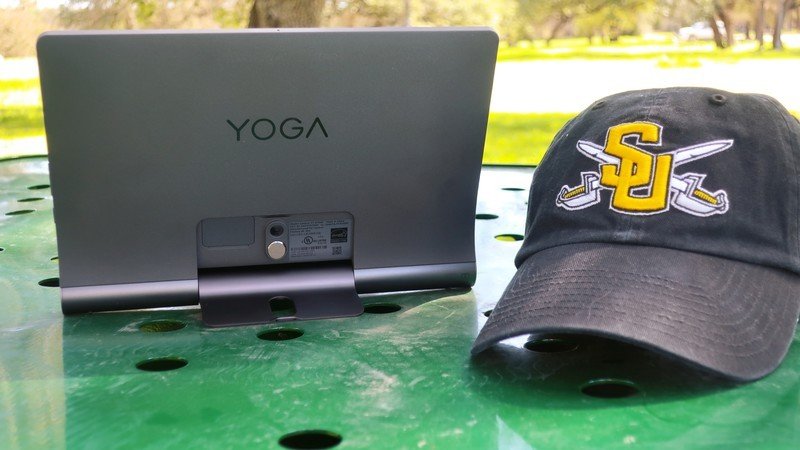
As much as I like the Yoga Smart Tab, it's by no means perfect. In fact, some of the biggest complaints I have about the device relate directly to its main selling points.
Android and ambient issues
As I mentioned, this tablet (and most others) ships with Android 9 Pie. Honestly, I think that's fine, but it does mean that it's missing out on some of the latest privacy and accessibility features from Google. And while I did say that most of my everyday apps performed quite well at that 10-inch size, there was some occasional jankiness too. Oh, and the haptics? They're not the best. A bit jerky and loud when typing.
Some, like Instagram, would not work in landscape mode. This isn't the worst thing in the world, but it does mean that you can't use them while the kickstand is in use. Other apps would randomly switch between portrait and landscape mode. Sometimes this happened seemingly at random, and other times it would occur while navigating between screens in an app. Not a deal-breaker, but not optimal either.
Ambient Mode is great when it works, but there were times when it drifted off and went to sleep on me. You can tap the screen to reawaken it, but even that was hit or miss occasionally. If you're going to have Ambient Mode enabled overnight, plug this thing in. I took mine off the charger at 4 pm, left it in Ambient Mode overnight, and by 9 am the next morning, it was practically dead.
Kickstand shortcomings
While the built-in kickstand enables several different modes and use-cases, it does have some drawbacks. For example, when in "stand" mode, the tablet wobbles quite noticeably when typing on the onscreen keyboard. A couple of times, it got to the point where I thought it was going to tip over, and I wasn't jamming my finger against the screen very hard either. The exception to this is if you put the tablet in tilt mode. Because the angle is much less severe, and the device is lower to the surface, it feels pretty sturdy to type on in this orientation. Overall though, if you plan on typing a lot with this thing, I'd recommend picking up an external Bluetooth keyboard.
Lay it in tilt mode or get a Bluetooth keyboard if you want to type on this tablet.
Oh, one more thing about the kickstand is that it doesn't work in portrait mode, like at all. I would love it if you could prop it up in portrait to read while eating or when messing around with Android apps that don't support landscape (hello Instagram), but alas, that is not to be.
Price
With the build quality and unique features, I'm not saying that the Yoga Smart Tab is overpriced; however, I do think it would be more competitive and compelling if it was a bit cheaper. Even though it's a Fire tablet slayer, it's priced against the entry-level iPad, which is more powerful and more capable as an all-around entertainment and productivity machine. If Lenovo would lower the price by $50, or even by $25, I think it would be in the sweet spot between those two competitors. More premium and versatile than a Fire, less expensive and capable than an iPad.
Cameras



The cameras on this device aren't awful, but they're not great either. They're about what you'd expect from a low-end or mid-tier Android phone. You can get some good shots in good lighting conditions and with a steady hand, but it's not going to give your Pixel a run for its money. But honestly, its fine for a tablet. You shouldn't be using these for photography anyway!
So should you get one?
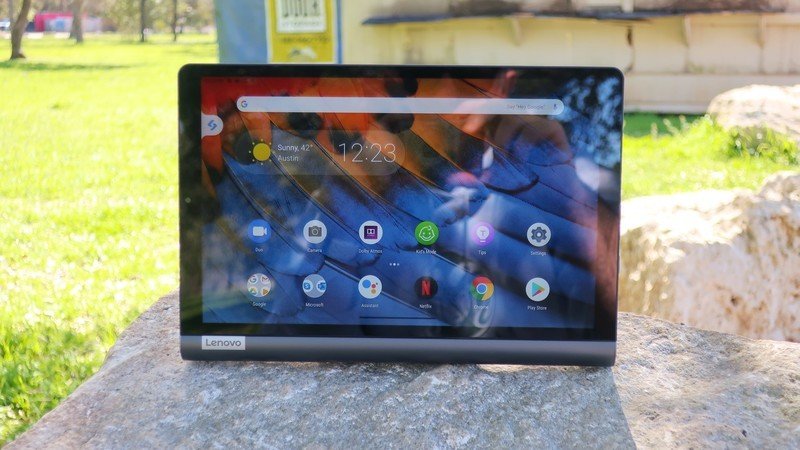
I think there is a market for this tablet, for sure. If you're someone who wants a well-made entertainment device and doesn't already have a tablet, this thing is for you. If you want a smart home hub with added functionality and (literal) flexibility, this thing is for you. Heck, if you want a device that you can take on the train to read books or watch movies on while placed on the tray table on a plane, this thing is for you.
4 out of 5
If I didn't already have a home full of iPads, Echo Shows, and Nest Hubs, I'd grab one of these in a hot second. And if/when it drops in price, I still may. It's a really solid device, and I've found Lenovo takes smart chances with unique form factors and design choices. If you've got $300 to spend and you're looking at gadgets like the iPad or Nest Hub Max, this is a great compromise to both of those products, in one handy device.

Jeramy was the Editor-in-Chief of Android Central. He is proud to help *Keep Austin Weird* and loves hiking in the hill country of central Texas with a breakfast taco in each hand.
